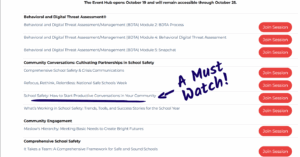The Overlooked Reality: Weapons in Elementary and Middle Schools
When most people think of school shootings, they picture high schools. And while high schools do account for a significant number of incidents, the data tells a much broader and more urgent story that include elementary and middle schools.
According to the K-12 School Shooting Database, which tracks the 300 most recent incidents, 166 occurred at high schools, but that means 134 shootings happened at other school levels:
- 76 at elementary schools
- 31 at middle schools
- 10 at K–8 schools
- 4 at K–12 campuses
- 2 at 6–12 campuses
- 2 listed as “Other”
That’s more than 40% of incidents happening outside high schools. The numbers speak for themselves: school shootings aren’t isolated to teens and upper-grade campuses. Students in elementary and middle schools also face real risks.
Some school districts are responding with action. Rome City Schools in Georgia is one example. Starting this fall, all elementary schools will use the OPENGATE Weapons Detection System as part of a broader, multi-layered safety approach that includes emergency drills, mental health support, and school climate initiatives.
“The safety of our staff and students is a top priority,“ said John Fricks, Director of Instructional Technology, Safety, and Operations. The systems will be used daily for visitor screening and during after-school events and sports, providing flexible protection across campus settings (Coosa Valley News).
Middle schools are also at the center of safety planning. In North Carolina, Rockingham County Schools began their weapons detection rollout at the middle school level, starting deploying OPENGATE at J.E. Holmes Middle School. After receiving strong support from students, staff, and families, the district expanded the program to all middle and high schools. The systems are now in place for the first day of school and at all events. The purchase of the OPENGATE systems was partly made possible through a grant from the Center for Safer Schools (GovTech).
Adding OPENGATE to your elementary and middle schools extends protection where it’s often overlooked. With fast, contactless screening, flexible setup, and minimal disruption to students, it provides superior security for younger campuses without slowing them down.
As school safety strategies are developed, it’s vital to recognize that the threat doesn’t begin in high school. Protection should be layered, thoughtful, and deployed across all grade levels.
Data sources: K-12 School Shooting Database, Coosa Valley News, GovTech
Gallery








